Matrices and Determinants
The matrices and determinants are used in the field of Mathematics, Physics, Statistics, Electronics and other branches of science. The matrices have played a very important role in this age of computer science.
The idea of matrices was given by Arthur Cayley, an English mathematician of nineteenth century, who first developed, “Theory of Matrices” in 1858.
Matrix
A rectangular array or a formation of a collection of real numbers, say 0, 1, 2, 3, 4 and 7, such as;
$$ \begin {matrix} 1 & 3 & 4 \\ 7 & 2 & 0 \\ \end{matrix} $$
and then enclosed by brackets ‘[ ]’ is said to form a matrix
$$ \begin {bmatrix} 1 & 3 & 4 \\ 7 & 2 & 0 \\ \end{bmatrix} $$
Similarly,
$$ \begin {bmatrix} 0 & 1 \\ 3 & 4 \end{bmatrix} $$
is another matrix.
We term the real numbers used in the formation of a matrix as entries or elements of the matrix. (Plural of matrix is matrices)
The matrices are denoted conventionally by the capital letters A, B, C, . . ., M, N etc. of the English alphabets.
Rows and Columns of a Matrix
It is important to understand an entity of a matrix with the following formation.
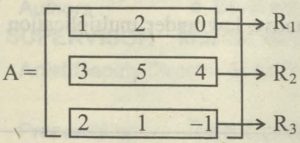
In matrix A, the entries presented in horizontal way are called rows of matrix.
In matrix A there are three rows as shown by R1, R2 and R3.
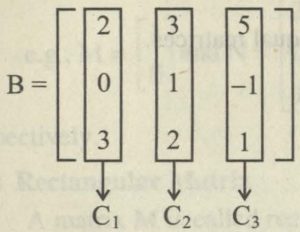
In matrix B, all the entries presented in vertical way are called column of matrix.
Matrix B has there columns as shown by C1, C2 and C3.
It is interesting to note that all rows have same number of elements and all columns have same number of elements but number of elements in rows and columns may not be same.
Order of a Matrix
The number of rows and columns in a matrix specifies its order.
If a matrix M has m rows and n columns, then M is said to be of order m-by-n.
For example,
is of order 2-by-3, since it has two rows and three columns, whereas the matrix
$$ N = \begin {bmatrix} 1 & 2 & 3 \\ -1 & 1 & 0 \\ 2 & 3 & 7 \\ \end{bmatrix} $$
is a 3-by-3 matrix and
is a matrix of order 1-by-3.
Equal Matrices
Let A and B be two matrices. Then A is said to be equal to B, and denoted by A = B, if and only if;
- the order of A = the order of B
- their corresponding entries are equal.
Example 1
We see that:
- the order of A = the order of B
- their corresponding entries are equal.
Thus A = B
Example 2
We see that order of L = order of M but entries in the second row and second column are not same, so L ≠ M.

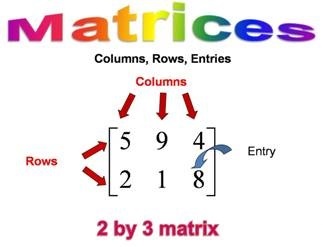
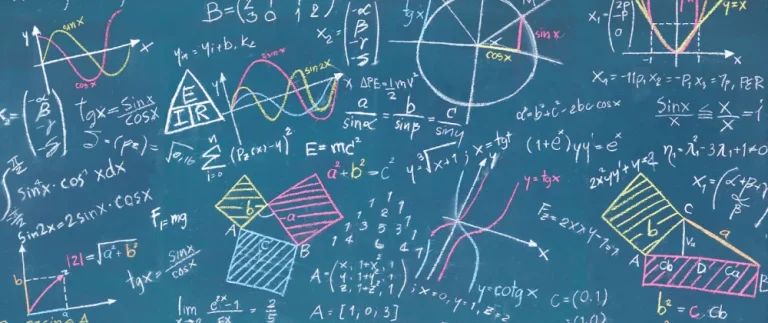
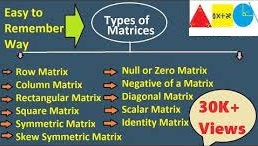
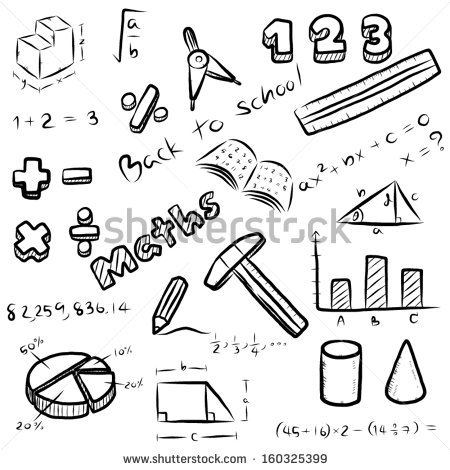
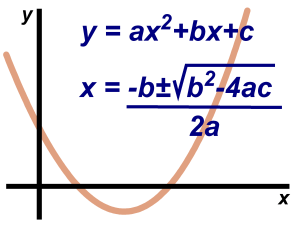

You must be logged in to post a comment.